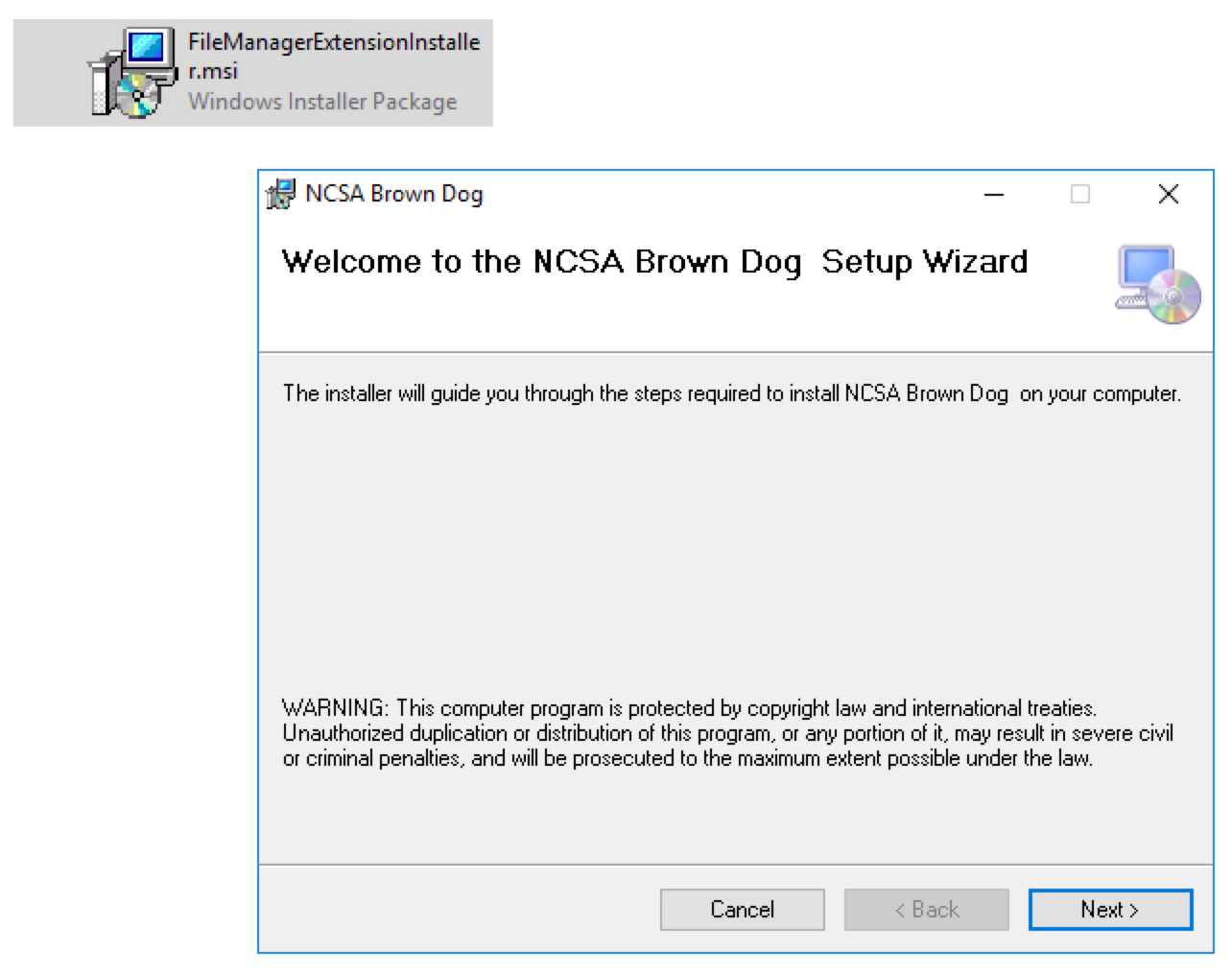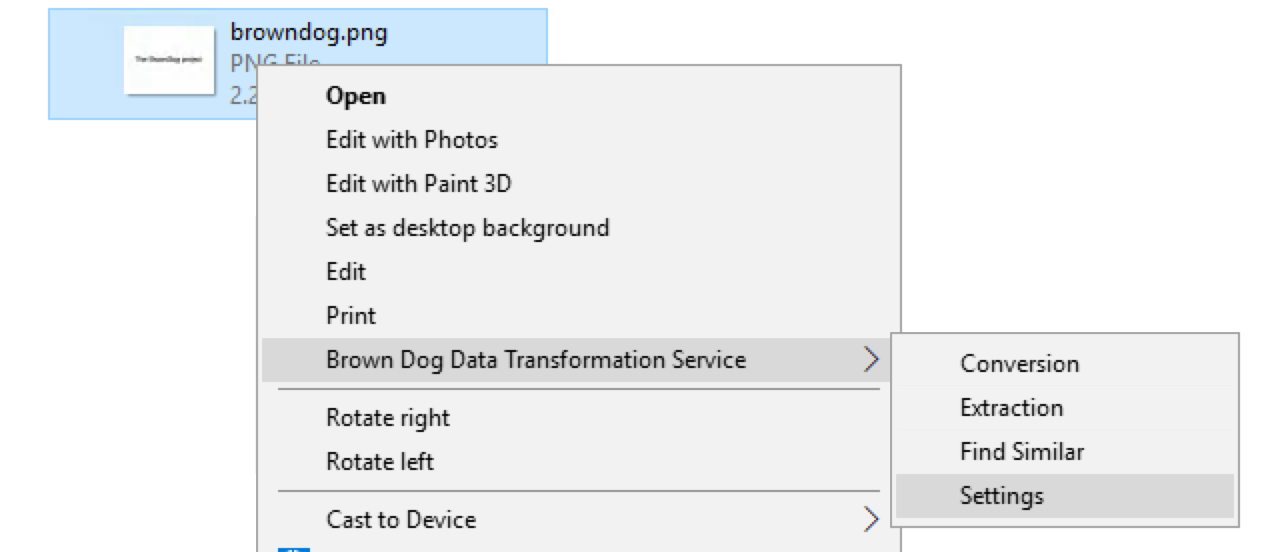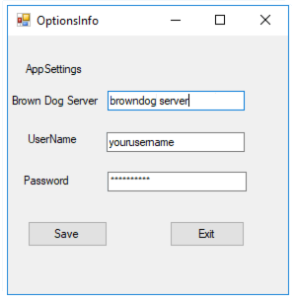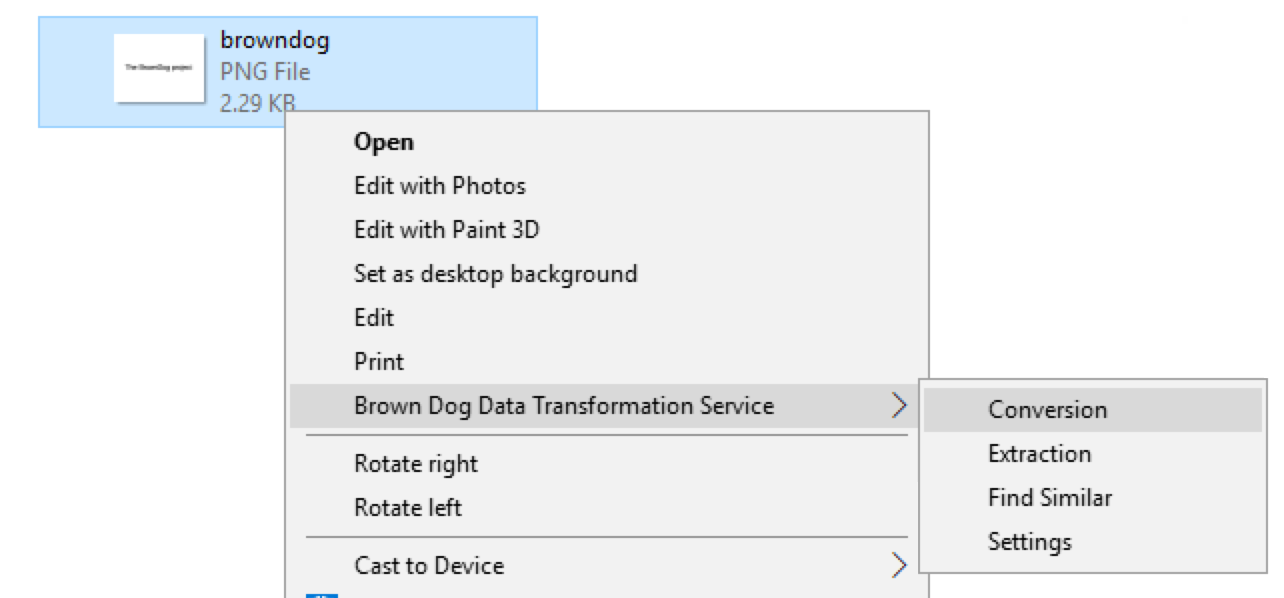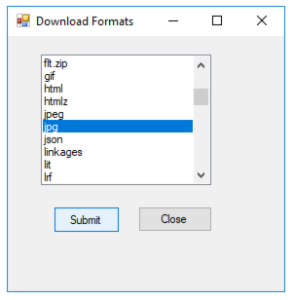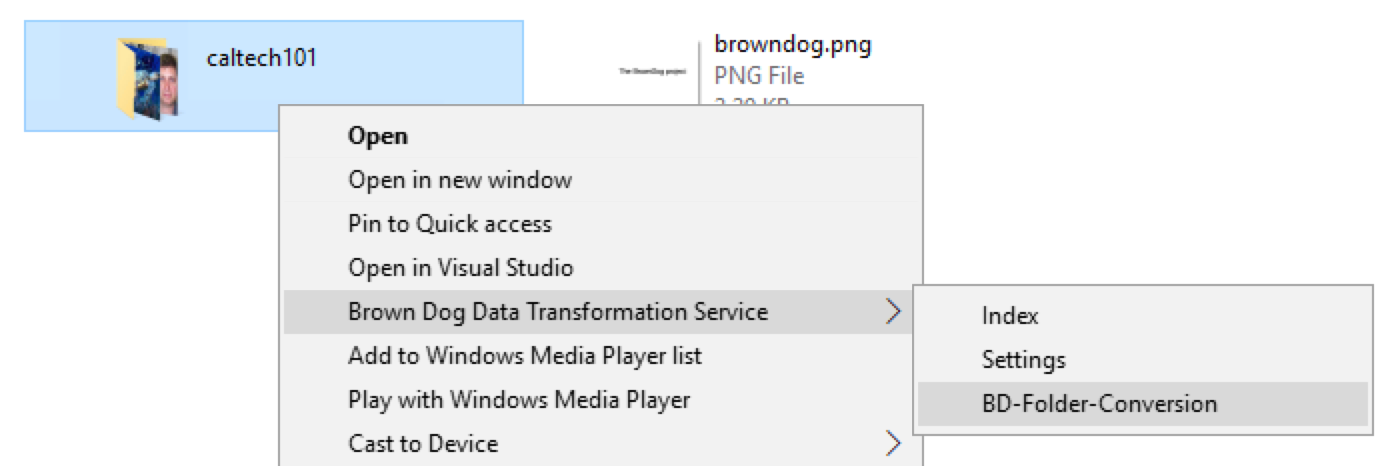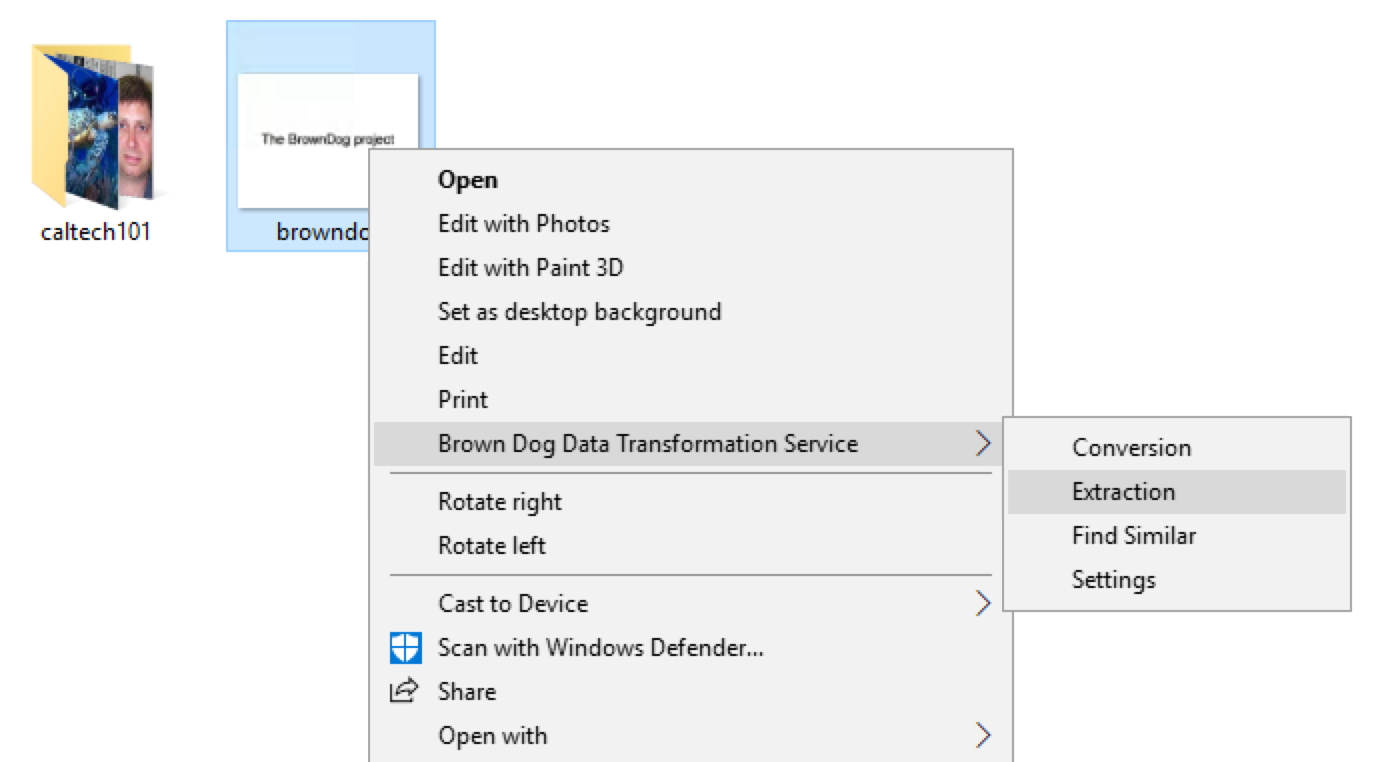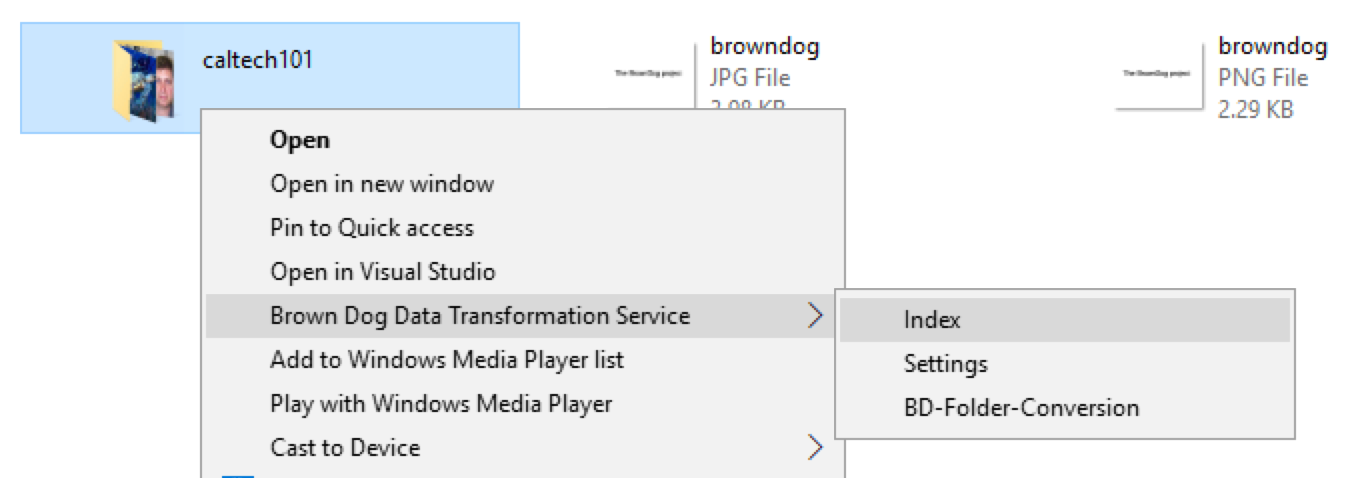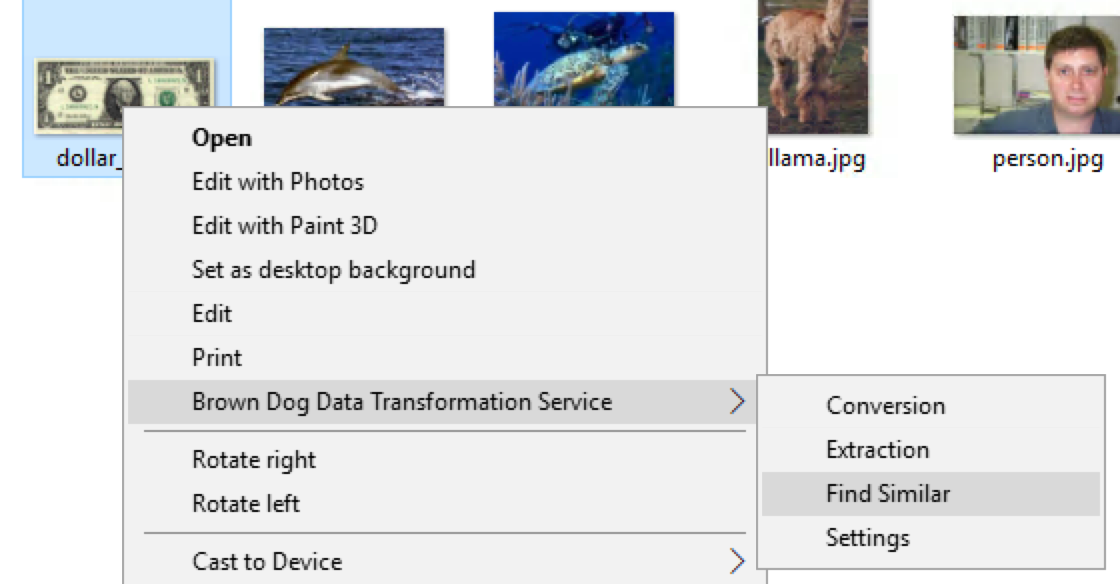The Brown Dog Windows clien provides users with an easy graphical interface to Brown Dog services. It talks to various components of Brown Dog through its API. It can be used to do operations like file conversions and extractions.
Installation and Setup
Windows users can go to Brown Dog Clients to download BD windows Client Installer and install it on Windows (7, 10).
After installation, user has to setup browndog gateway server and username/passwd.
For example, in above figures, user right click a file and select ``Settings'' from popping up menu. In App Setting dialog box, user will enter information of browndog server and username/passwd and click ``Save'' button.
Conversions
BD Windows Client makes it very easy and comfortable to convert a file format to any supported convertible format on BrownDog Server.
User can browse files via Windows Explorer and execute conversion by right clicking on the file of interest and selecting ``Conversion'' from pop-up menu (left figure). And then user can look up and select an output format from the list of supported convertible formats in the popping up dialog box (right figure).
Above figures show how users execute conversion between .png format file to .jpg format file. Right after completion of running conversion on file ``browndog.png'', the converted output will be written as ``browndog.jpg'' in the same working directory.
Converting Entire Folders
Windows Client provides batch conversion on files. Users donot have to select each individual file and repeat executing conversion from GUI manually. Users convert the same format of files to a convertible format by ``One Click''.
Example figures show how to convert all .jpg files to .bmp files. A folder named ``caltech101'' contains multiple .jpg image files. User can right click this folder and select ``BD-Folder-Conversion'', then pick a convertible output format ``BMP'' to submit for conversion. A random name folder containing output files will be generated inside ``caltech101'' folder.
Extractions
User can execute extraction on a file by right clicking it and selecting ``Extraction'' from pop-up menu.
The extraction output file is json file, which is named as the file name. For example, in above figures, user runs extraction on file ``browndog.png'', and after completion, extraction output file will be written as ``browndog.json''in the same working directory.
Finding Similar Files
User can index image files in a target folder, and then pick an indexed image and right click ``Find Similar'' to extract the similarity result from all indexed images.
Above figures show how user can execute ``Find Similar'' among images under ``caltech101'' folder. First, user needs to do ``Index'' to index all images under ``caltech101'' folder (left figure), when indexing is done, a ``.index.tsv'' file will be generated under this folder. Then user can browser indexed images in ``caltech101'' folder and select an image and right click on it to execute ``Find Similar''. In this example, user selects an image file ``dollar_bill.jpg'' and the output file of ``dollar_billFind.json'' file will be generated under the same working directory.
